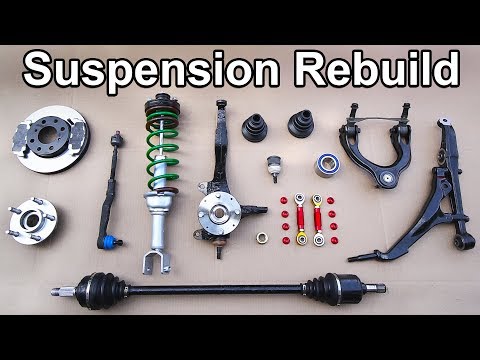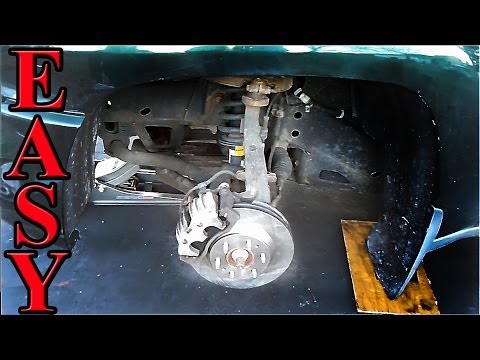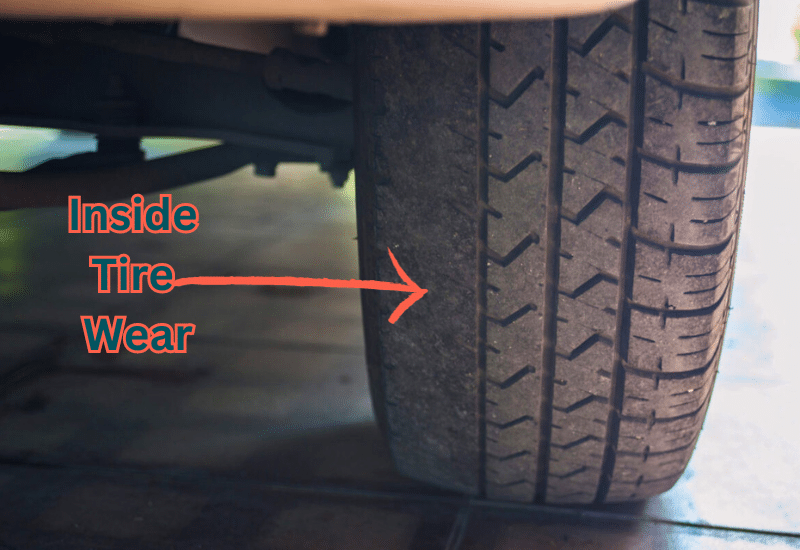
You can learn a lot about how your car works by looking at the tires and their wear patterns.
One of the many patterns you might notice is that your tires are wearing faster on the inside, that is, the inboard side (that faces the car). This is as opposed to the outboard side facing the road or the curb.
An out-of-spec wheel alignment causes excessive wear on the inside of the tires. You may have excessive toe-out, excessive negative camber, or your tires are underinflated (or any combination of two or more of these things).
Bad wheel alignment usually results from lowering the car, carrying heavy loads, or failing suspension components. The solution will always be to fix the underlying problem, replace the tires, and carry out a new wheel alignment.
In this article, we’ll teach you how to identify an excessively worn tire on the inside, diagnose the problem that’s causing it, and fix it.
How to Identify Wear on The Inside of a Tire
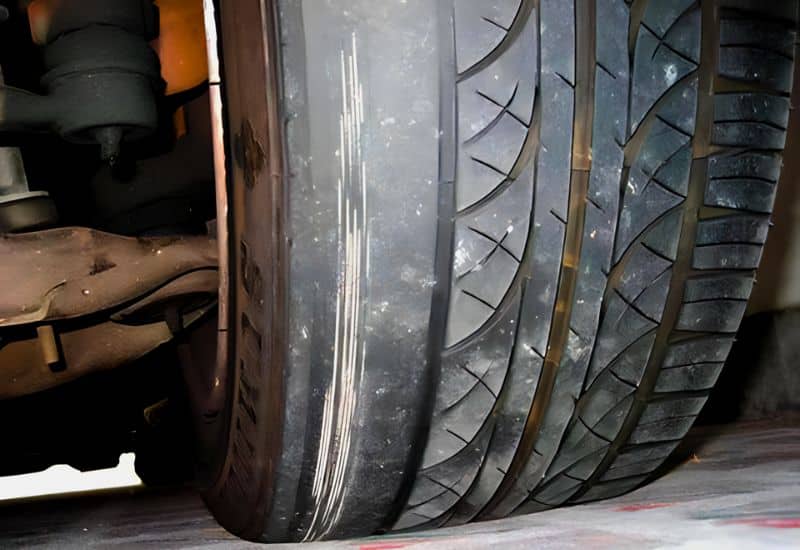
You can have an idea of the wear on your tires by looking at the tread patterns. Tires that are severely worn on the inside will noticeably have less tread pattern on the inside edge than the rest of the tread surface. This can generally be seen quite clearly with the naked eye.
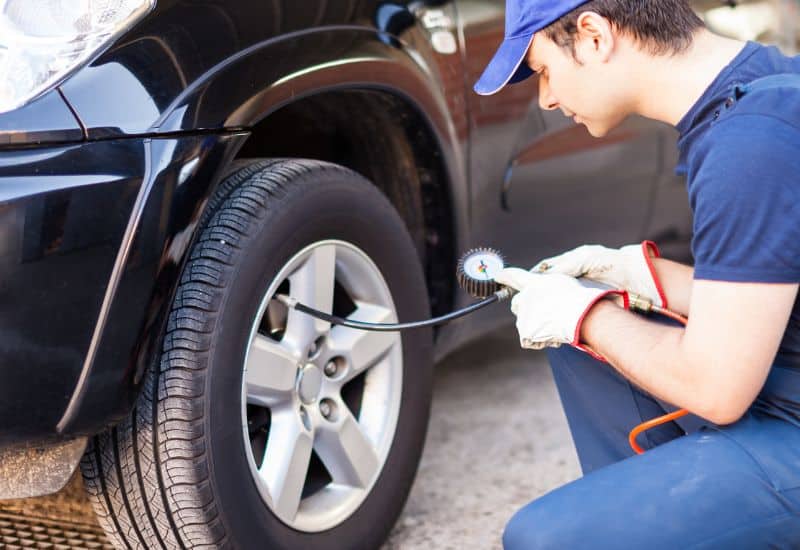
In more subtle cases, or if you want to identify your wear patterns before they become a problem, you might have to measure the tread depth. You can have a broad idea of the tread depth by using something as simple as a coin. The simpler way to do this, however is to use a tire tread gauge and measure the tread depth on several points across the tire surface. If the tread is shallower near the inside edge of the tire, then your car is wearing the inside of the tires faster.
What Causes the Inside of a Tire to Wear Out?
The simple answer is bad wheel alignment.
The way your car’s steering and suspension geometry is set up is comprised of several angles, all of which impact how the car rides, handles, and uses its tires. If the wheels are not correctly aligned, for whatever reason, this will adversely affect your tire wear.
The main alignment specifications that affect tire wear on the inside are toe and camber. Tire pressures also play their role, although in a different way.
1. Toe-out
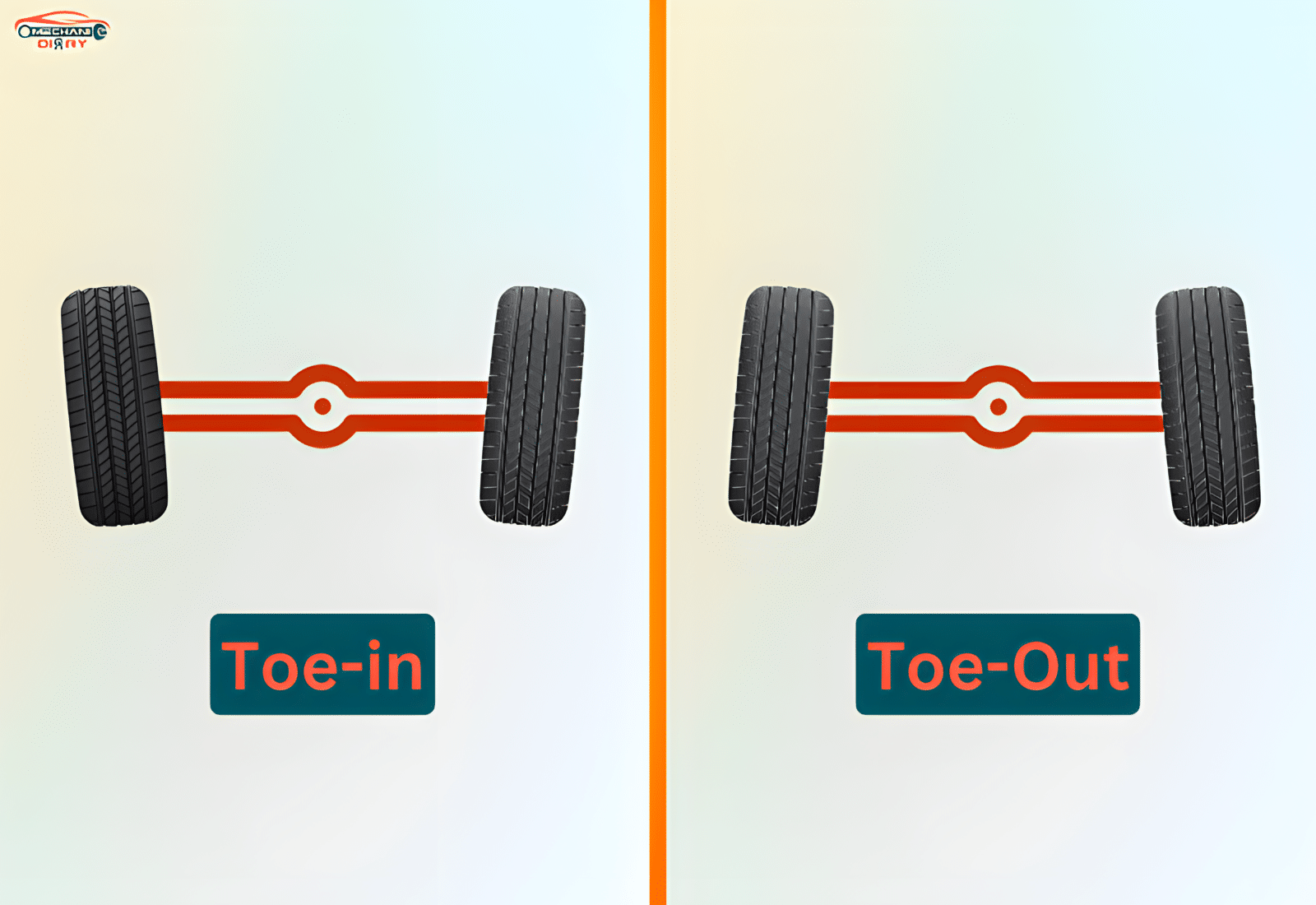
Toe relates to the direction the tires are pointed toward when the steering wheel is centered and the car is going straight ahead.
If the tires are perfectly parallel to the vehicle’s centerline, then toe is said to be zero. If the front of the tires points toward each other, to the inside of the car, then there’s toe-in. Conversely, if the front of the tires points away from each other, toward the outside of the car, then there’s toe-out.
Toe-in causes the outside of the tire to wear faster, while toe-out wears out the inside. So, if you notice a worn-out “strip” on the inside of the tire, your problem is most likely that you have excessive toe-out. This happens because the leading inside edge of the tires is essentially being “dragged” down the road as the vehicle drives in a straight line.
2. Negative camber
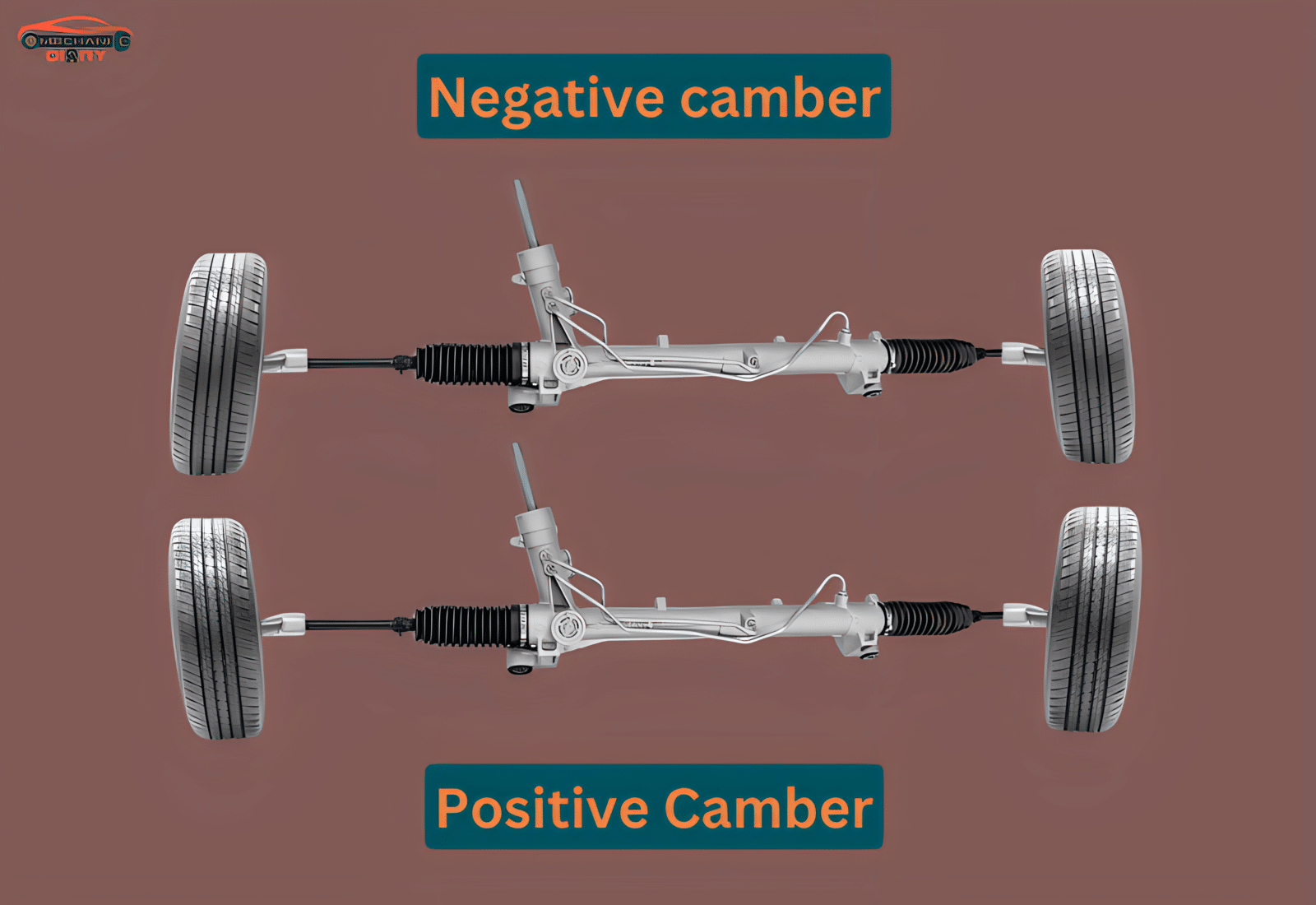
Another cause of excessive wear on the inside of tires is excessive negative camber angle.
Camber relates to the lateral inclination or “lean” of the tire from true vertical when viewed from the front of the vehicle.
Most cars will spec between zero and negative one degree of camber from the factory. Excessive negative camber will cause the car to ride on the inside of the tires, resulting in excess wear on this area. The tire will also appear deformed, as most of the car’s weight is concentrated on the inside rim of the tire, causing this area to appear flat at a diagonal angle with the horizontal.
3. Underinflation
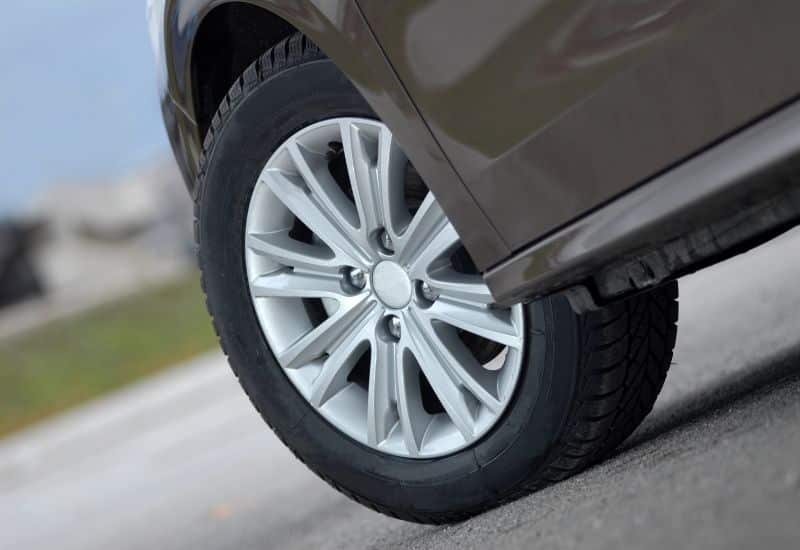
Tires that are underinflated will ride on their outer edges. So, if you have excessive wear on both the inside and outside of the tire, then chances are you have been running lower inflation pressures than recommended for your car.
Modern cars have a tire pressure monitoring system to alert you when tire pressure is low. Otherwise, you should check your tire pressure at least once a month.
The gas station air pump’s pressure gauge is not always properly calibrated and can be unreliable, so consider investing in a portable tire pressure gauge and pump.
If your tires are often underinflated, have them checked out at a tire shop, as you may have a leaky tire valve.
9 Causes For the Wheels to Go Out of Alignment
We have seen that tires wearing out on the inside can usually be attributed to bad wheel alignment, particularly, toe-out and/or negative camber. But what causes the alignment to go bad in the first place?
Several reasons range from simple replacement of suspension and steering parts to worn-out components.
1. Suspension or steering components were replaced
The alignment is out of spec because suspension components were replaced, but an alignment wasn’t carried out.
You might be eager to drive your car after fitting some fancy new hardware, but whenever you replace any suspension or steering components, your first stop should always be the tire shop for an alignment. For a few reasons, an alignment should always follow suspension work.
For starters, not all parts are created equal. For example, different springs or shocks might alter the vehicle’s ride height. Different length control arms or ball joints will alter the wheel position or inclination with respect to the body.
Also, it’s normal for some things to get moved around during installation. Parts like the struts or subframes have a certain degree of flexibility allowed during mounting, which can sometimes be used to fine-tune the geometry. All these changes will affect the alignment.
2. Lowering the car

Lowering the ride height greatly changes the suspension geometry. The front wheels especially tend to gain toe-out and negative camber when lowered (up to a point), which is the perfect recipe for rapid inner tire wear.
If you have fitted lowering springs or coilovers, you should get a wheel alignment done to ensure your car handles well and uses its tires correctly.
3. Carrying heavy loads
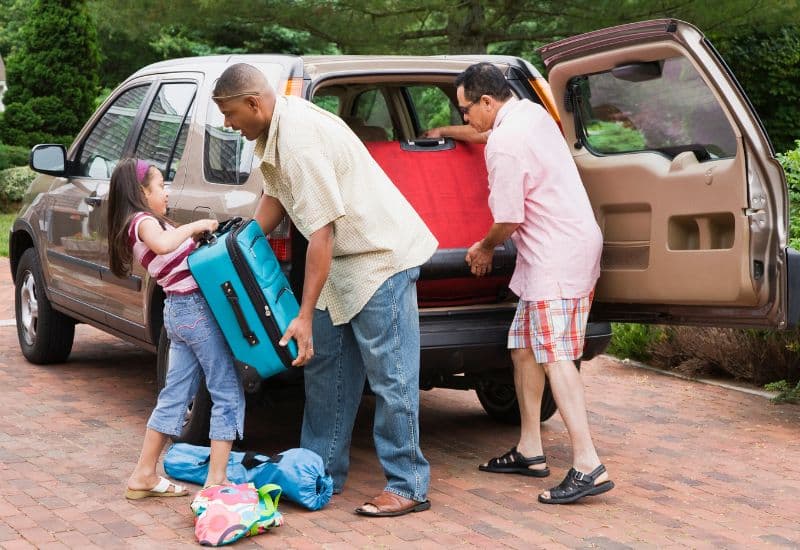
This is an often overlooked aspect, but heavily loading a car or truck can also adversely affect the steering geometry.
That’s because carrying weight on the car puts a heavy load on the suspension, which tends to compress the springs and lower the ride height. As we’ve seen, that often results in toe-out and negative camber gain. This will normally affect the rear wheels a lot more than the fronts.
A handy tip is to have the car aligned with the load you usually carry around with you. For example, if you usually drive with a large toolbox in the trunk, having it in the trunk is a good idea when the car is aligned.
This will not affect vehicles with solid axle rear suspension since the connection between the wheels on each side is rigid and usually doesn’t allow for any camber or toe change. That is one of the main reasons why heavy trucks or vans often have a solid axle rear suspension, as these vehicles are designed to carry heavy loads frequently.
4. Worn-out ball joints
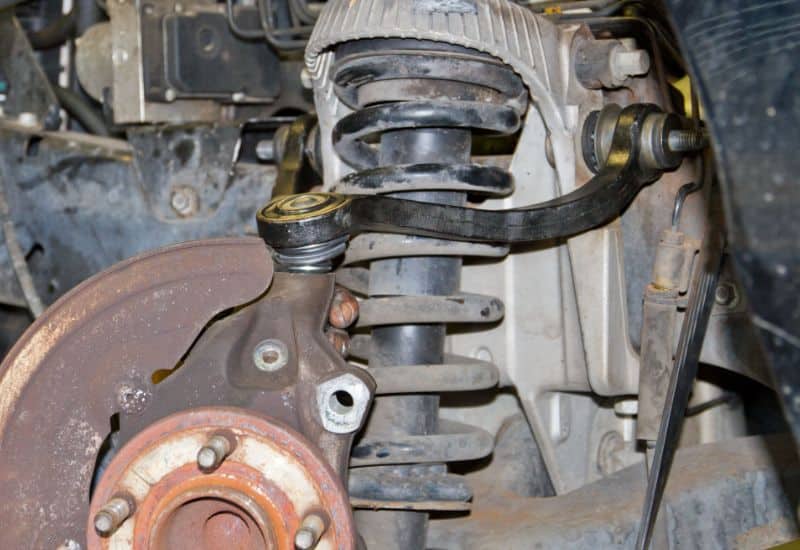
The ball joints connect the suspension control arms to the steering knuckle of your car. They will wear out over time due to friction from normal use, introducing some degree of play into the suspension and steering system of the vehicle.
If this gets excessive, it can cause the tires to “wobble,” causing them to wear in strange patterns. If it causes the camber to go negative, this will wear the tires out from the inside.
5. Worn-out tie rods
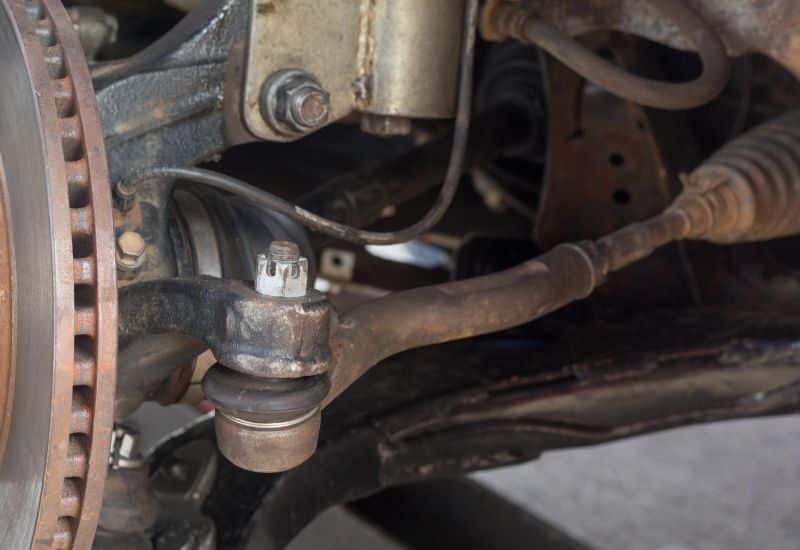
The tie rods attach to the steering knuckle as well and are the last step in the connection between the steering wheel and the road wheels of your vehicle.
They will also wear out and go bad over time, causing the tires to wobble. This will throw off the wheel alignment and can cause toe-out, which will wear the inside of your tires very fast.
6. Bad shocks, struts or springs
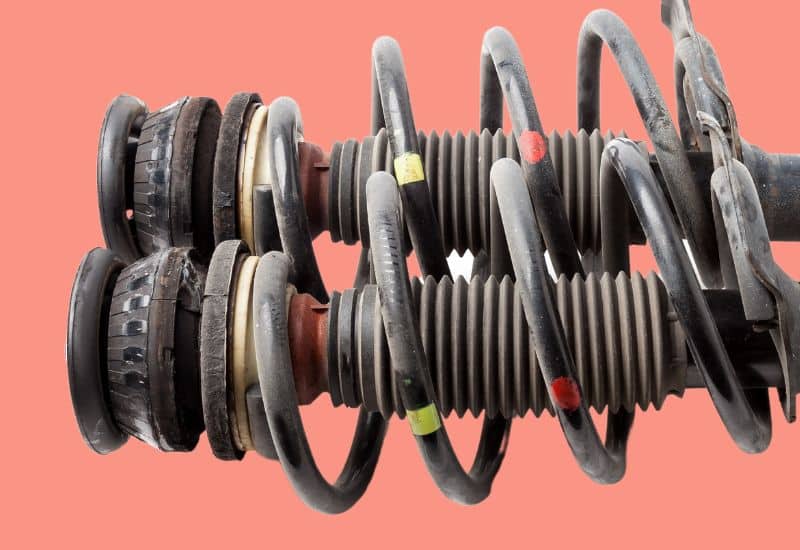
Shocks that have sprung a leak, aged springs, or struts that have gone bad will cause the suspension to sag in that corner, decreasing the ride height. This will normally introduce negative camber and toe out into the corresponding wheel, which will wear the inner edge of the tires.
7. Bad bushings
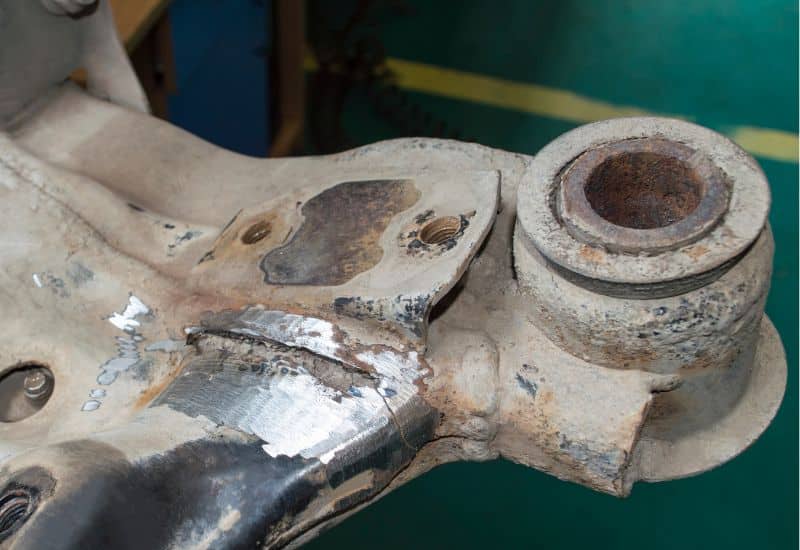
Bushings serve to create a rigid connection between several components of the suspension, such as the control arms and the subframe, to the chassis.
In stock suspension systems, the bushings are normally made of soft, pliable rubber to better cushion vibrations and isolate the cabin from road imperfections. With time, this rubber may wear down and develop cracks, introducing extra compliance in the suspension and throwing off the wheel alignment.
8. Bent axle
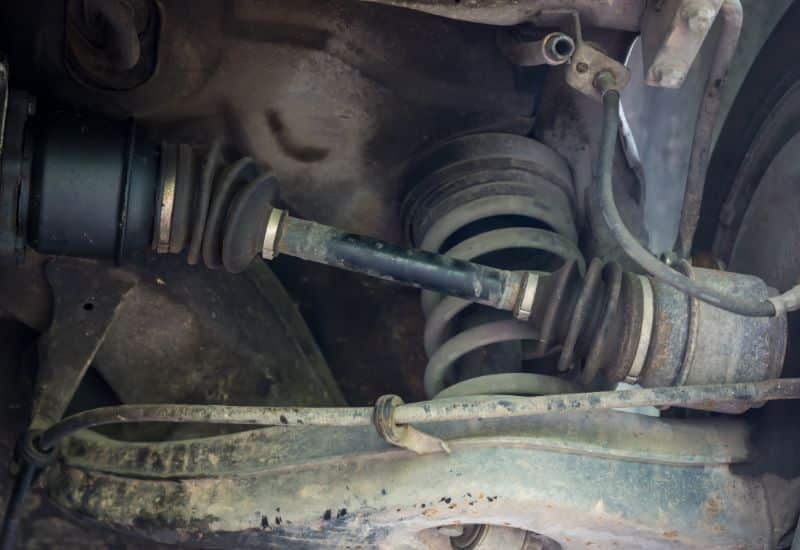
Some cars have solid axle suspension in the rear axle. This type of suspension consists of a simple, rigid transverse beam that connects the wheel on one side to the other. As such, it offers no adjustability.
If you have toe-out or negative camber in the rear axle of a car with solid suspension, that means the axle is probably bent and will need straightening or replacing.
9. Bent or misaligned subframe
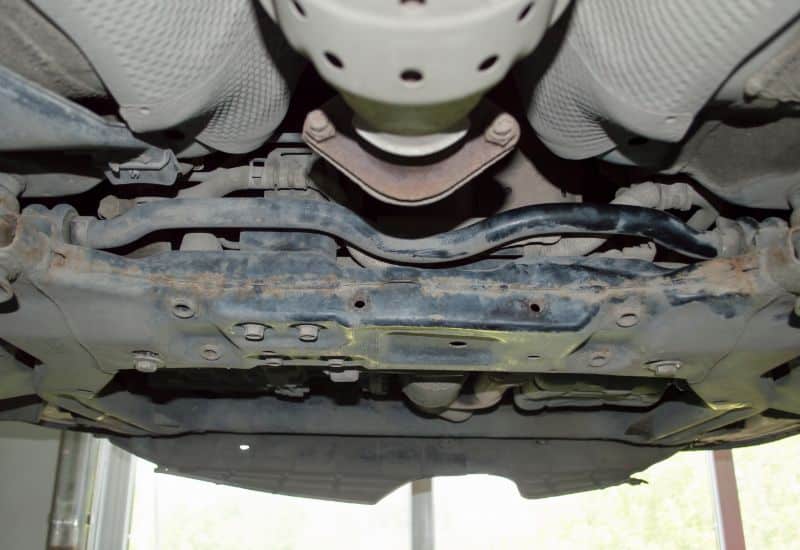
A bent or misaligned subframe will alter the geometry of the entire suspension. Normally, this will only happen if the car has been in a nasty accident or if the subframe has been improperly mounted after a replacement.
How Do You Repair the Wear on the Inside of Your Tires?
You have identified that your tires are wearing the inside edge faster. What now? Here’s what you can do:
1. Find and fix the underlying suspension problem
Your tires have worn on the inside because of bad wheel alignment. There’s a high chance this has been the fault of some defective or worn suspension component.
Before you do anything else, you should find what has caused it – otherwise, you’ll just go through your new tires similarly.
Take a look at your shocks and make sure they aren’t leaking. Visually inspect the springs for cracks. Jack up your car, place it securely on jack stands, and carefully inspect all ball joints, tie rods, and bushings for wear and/or excessive play. Replace any faulty components with new ones.
If you aren’t comfortable doing these procedures yourself, have a reputable garage take a look for you. Just ensure an alignment is done after the necessary parts have been changed.
2. Replace the tires
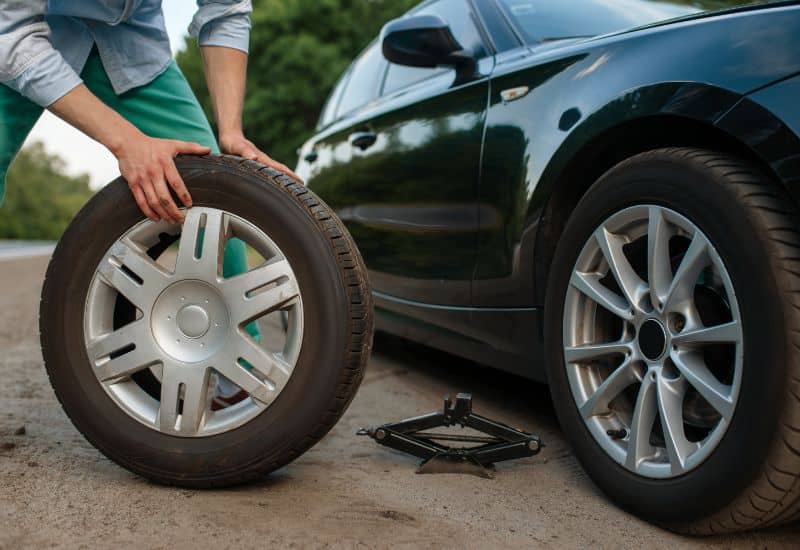
Once you have found the culprit, it’s probably time to get new tires. If you managed to catch the problem early and your tires still have enough tread depth left in the worn area, you can use them for a few more miles. However, once they have worn down, there’s little remedy other than replacement.
Always replace both tires from one axle simultaneously, and have them balanced before fitment to the car.
3. Get an alignment done
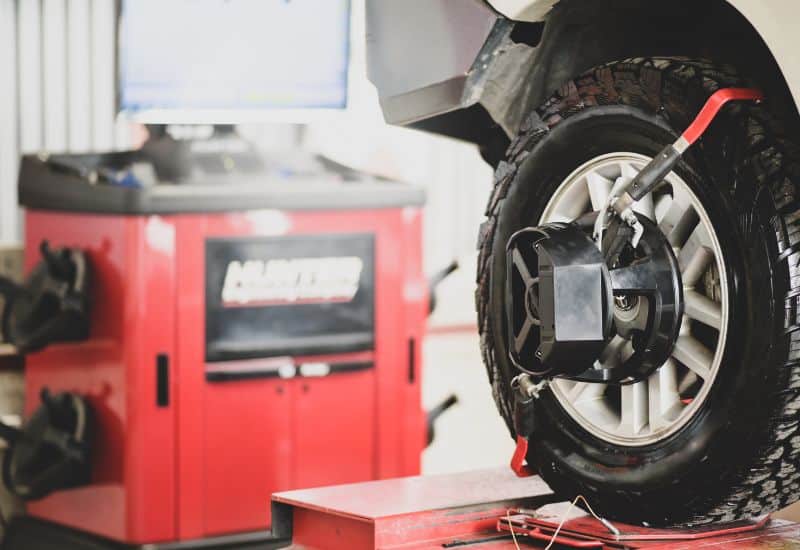
After fixing any suspension problems and replacing your tires, it’s time to go down to the shop for an alignment.
This procedure is carried out on a dedicated machine and relies on the information from wheel-mounted sensors to read the suspension angles accurately. The technician can then perform the necessary adjustments on the car until everything falls within spec.
Some people have done DIY garage alignments using a tape measure and some string to varying degrees of success. While that’s technically possible, it’s not advisable and won’t be anywhere near as accurate as getting a proper alignment done. The only way to get a good alignment done is by using the right equipment and in a reputable shop.
It’s possible to stay within the recommended alignment range and still have the vehicle pull to one side or wear the tires unevenly. Always align both axles (when applicable), and make sure the technician gets the angles as close to the optimal value as possible.
4. Properly inflate your tires
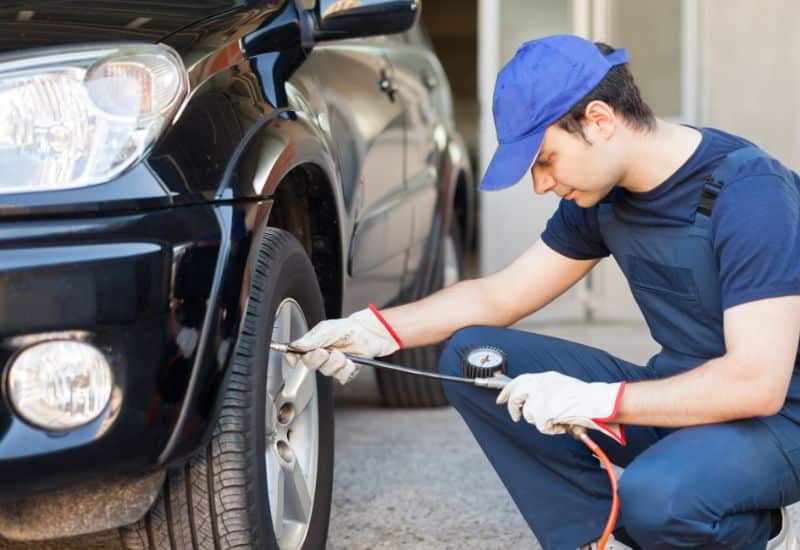
Tires wearing out on the inside and outside edges can be attributed to underinflation. Make sure to check your tire pressures at least once a month or before any major trips. Inflate them to the right pressure whenever this value is out of spec.
Check your service manual to know which tire pressures you should be running. Sometimes, this information will also be located on the driver’s door, sill, or gas tank door.
If possible, inflate your tires when they are stone cold or after driving less than three miles at a low speed. If your tires are hot, Michelin recommends you add 4 to 5 psi (0.3 bar) to the manufacturer’s recommended pressure or wait until they have cooled down. This can take as much as three hours after parking the car.
FAQs
Why are my front tires wearing on the inside?
Wear on the inside of the tires can be attributed to bad alignment on that wheel, in particular, toe-out and/or negative camber. Tires that wear on the inside and the outside edges result from low tire inflation pressures. The alignment can be out of spec due to worn-out suspension and steering components, a lowered or heavily loaded car, or parts that were replaced without an alignment being done.
What is irregular tire wear, and what causes it?
Irregular tire wear relates to tires that wear in individual patterns as opposed to wearing out evenly across the entire tread surface. It often takes the form of tires wearing on the inside and/or outside edges, the center rim, or in patches across the tread. It is usually caused by bad wheel alignment, a byproduct of suspension wear and tear, or damaged components.
Do tires lose grip when they’re worn out?
Worn-out tires will result in less traction on wet or snowy surfaces. That’s because the tread patterns carved into the tire’s surface to evacuate standing water are no longer present, which causes a layer of water to stand between the tire and the road, causing the tire to lose contact with the asphalt. This is a phenomenon known as aquaplaning or hydroplaning.
Is it dangerous to drive with worn tires?
Yes, driving with worn tires can be very dangerous, especially in wet conditions, as you’ll have much lower traction available to steer and stop your vehicle in case you need to perform an emergency maneuver. Tires that are severely worn will struggle for grip even during normal driving speeds. You should monitor the wear of your tires frequently and never drive on tires that have exceeded the legal tread wear limit.

Written By
Jason Farrell
Jason Farrell is a certified master technician, the editor of Mechanic’s Diary in Pittsburgh, Pennsylvania. He is ASE (Automotive Service Excellence) certified and earned a Bachelor’s Degree in Automotive Technology from Pittsburg State University. With nearly 18 prior years of experience in the automotive field, he has extensive knowledge about Domestic, European, and other foreign makes and models of cars and light trucks. Jason’s experience working as a technician and service manager at dealerships, gave him the experience and know-how of most aspects of inspection, diagnosis, and repair from engine and drivability to electrical, HVAC, brakes, steering and suspension and everything in between.

